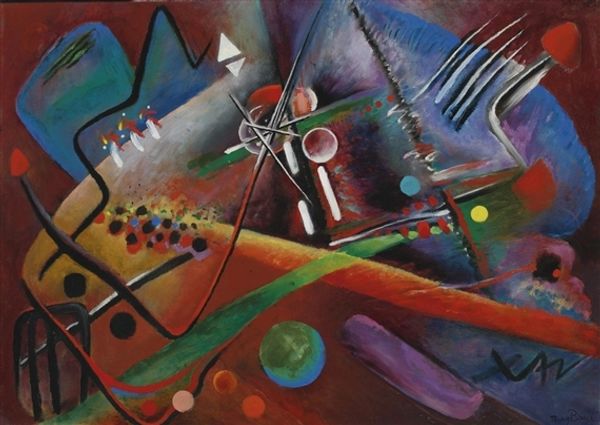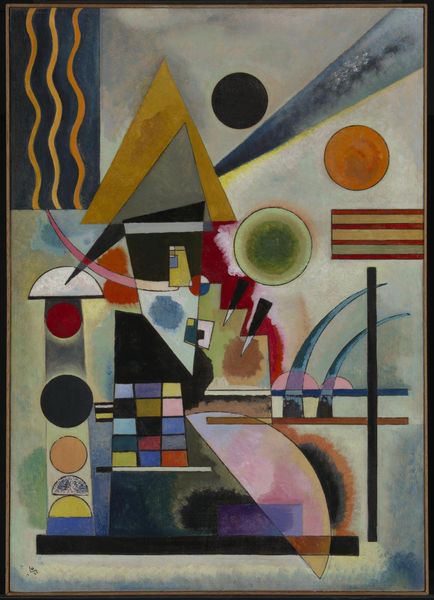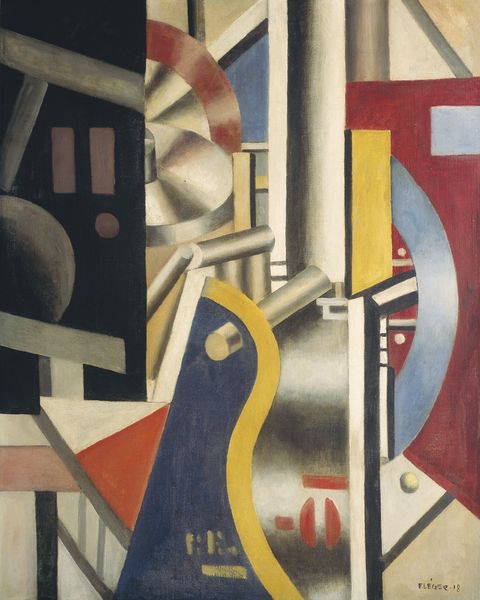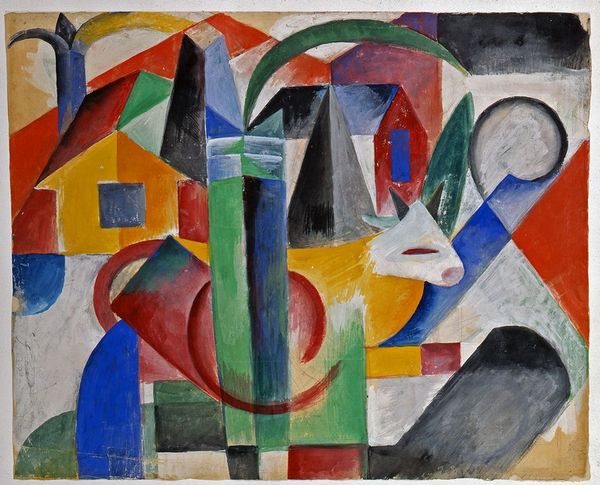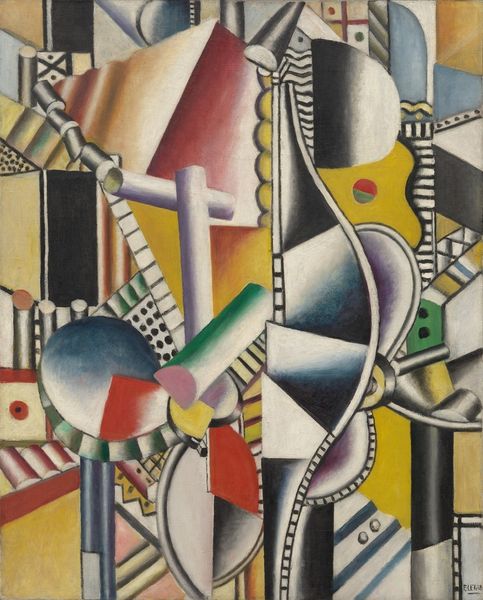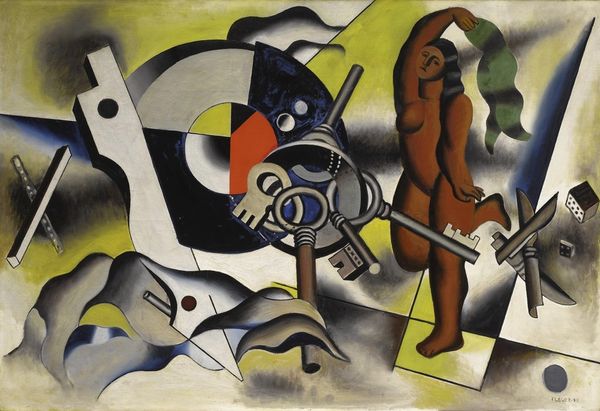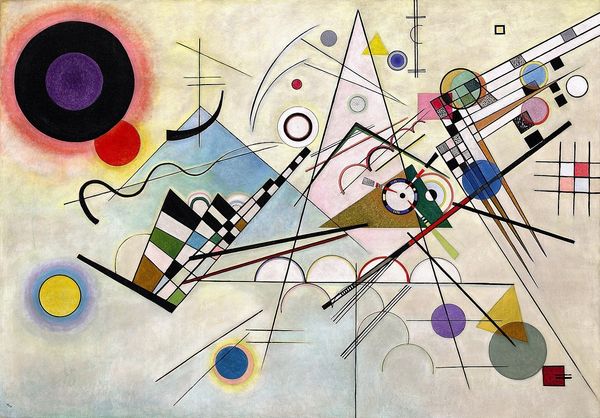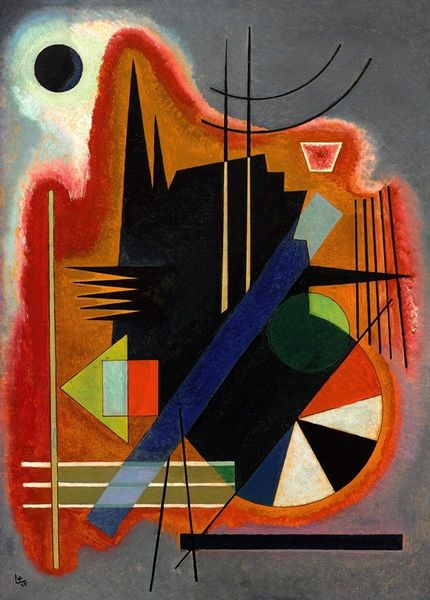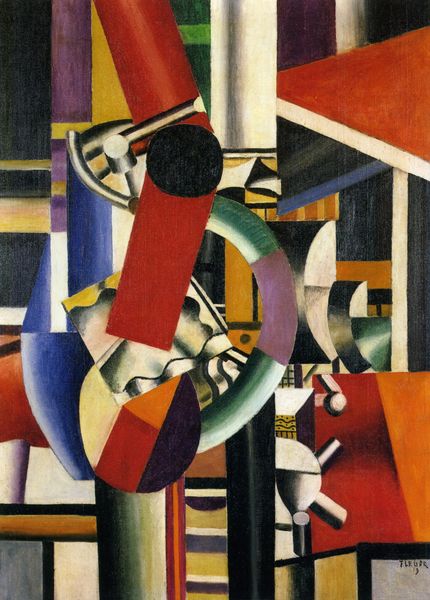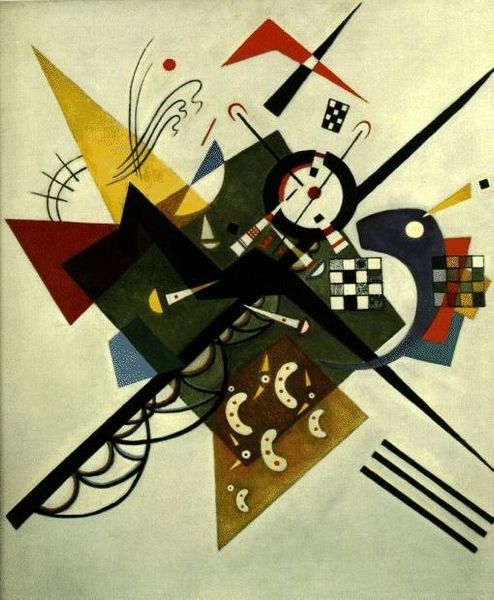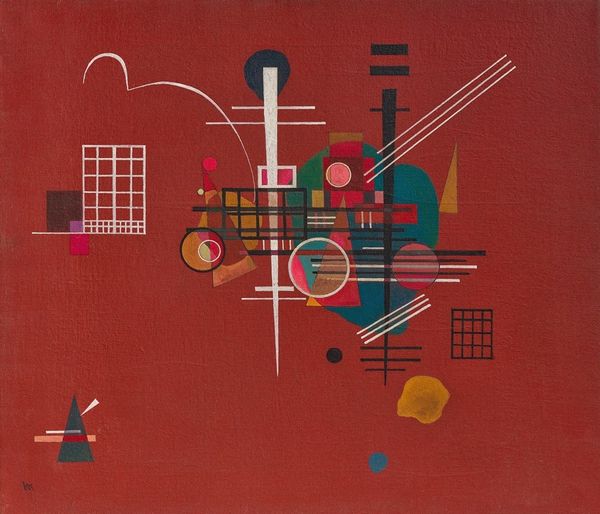
Dimensions: 96 x 106 cm
Copyright: Public domain
Curator: Here we have Wassily Kandinsky's "Black Frame," painted in 1922. At first glance, how does it strike you? Editor: Visually, it’s a vibrant collection of shapes floating within this pastel space, but there's also this undeniable sense of unease created by the stark contrast of the black grid. It almost feels like a discordant element that interrupts the harmony. Curator: Absolutely. Knowing Kandinsky's interest in the spiritual in art, it’s tempting to analyze each shape symbolically. But from a material perspective, consider the resources available in post-revolutionary Russia. Artists had to be resourceful, to make use of whatever paints or materials were available which affected their practice and the painting process. Editor: Interesting! Yet the color choices themselves still evoke meaning. The cool blues might represent tranquility, the yellow could symbolize enlightenment. But the stark black frame motif repeated in that grid – what could that signify culturally? Is it a cage? A barrier? A representation of the restrictions of the time? Curator: Perhaps a commentary on the societal structures imposed on individual expression. Remember that abstract art was often seen as a subversive act, even revolutionary. This painting, for example, uses mass-produced, rudimentary painting resources, which underscores Kandinsky’s intention. It becomes more about democratizing art making and making use of simple production values. Editor: And it achieves a feeling of liberation. I can't help but feel a connection to the Russian avant-garde movement. The symbols and geometric abstraction echo their bold attempt to construct a new visual language. That grid is a window, perhaps a portal to the future. Curator: Possibly. Or, viewed another way, it represents the limitations of geometric structure and rationality juxtaposed against the more fluid, spiritual qualities embodied in color. His art was shown alongside utilitarian, material items that also shared similar production methods. Editor: So, in the end, is it a message about repression or one about spiritual yearning? Both interpretations hold significant weight when understanding the cultural and individual climate of the era. Curator: Indeed. Understanding Kandinsky’s working context, including the methods of production, can transform how we interpret it. Editor: And unpacking the layered iconography, understanding how colors and forms gain meaning over time, enhances that insight.
Comments
No comments
Be the first to comment and join the conversation on the ultimate creative platform.
